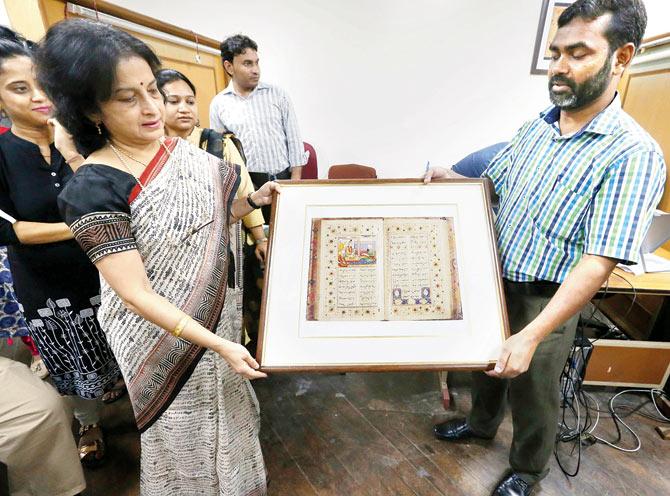Perhaps India's toughest digital project is bringing its manuscripts on one web portal. The team at National Mission for Manuscripts says what it's been like to do it for 14 years

When a scholar approaches us, saying that a particular script needs to be published, it doesn't happen immediately," says Sanghamitra Basu, head of the department of publishing at the National Mission for Manuscripts (NMM). Formed in 2003 by the Ministry of Culture under the then Atal Bihari Vajpayee-led government, the mission aims to do what hasn't been done in India before — to create a central collection of manuscripts of Indian heritage and digitise them, making them accessible to the public in general, and researchers in particular. But the process is quite meticulous. NMM, says Basu, the acting director in the absence of Dr (Prof) Ventaraman Reddy, currently on leave, has experts and committees across the country, who they consult when such requests come in. "Only if someone says this manuscript hasn't been translated and published, and is important, do we start work on it," she adds. Once a manuscript has been identified, however, the process of digitisation is a long one. Step one is conservation.

The team holds up a manuscript from its archives. It has digitised 2.3 lakh manuscripts until now. Pic/Imran Khan
Kirti Srivastav, the head of the conservation division, says often what they get are palm leaves, rolled in cloth and stuffed in storage spaces above the kitchen. "Sometimes, the pages are stuck and brittle. Over 100 years old, they haven't been used in a long time," she adds. Manuscripts vary from region to region in India. For instance, many are written in Sanskrit and Persian. And, Sanskrit itself can be written in various scripts, from Devnagiri to Telugu. In the north, says Srivastava, the most common finds are scripts written in gold ink. "From Rajasthan and Gujarat, we often get heavily illustrated works," she says, adding that these are her favourite and most challenging tasks. "Currently, for instance, the team is working on a script of the Bhagavad Gita from Gurgaon," she adds. The mission was in the news last week after it was reported that several manuscripts were waiting to be uploaded due to lack of web space with DVDs being hoarded up in cartons and cupboards. To this Basu says it's a government process and that requests have been made. "When they come, there'll be eight to 10, not one or two," she adds. In the 14 years since inception, the mission has digitised 2.63 lakh manuscripts, says digital in-charge Biswaranjan Mallick. His team steps in once the conservation work is done. "The manuscripts are scanned by professionals with scanners that don't touch the fabric. Sometimes, these are so old and fragile that even light can harm them. So, we have scanners that manage to scan them well, using minimal light," he adds.
Having joined the team at the start, his favourite work assignment memory is that of the Gilgit manuscripts. Almost 17 centuries old, the manuscripts are considered among the oldest in the world. Currently with the National Archives of India (NAI), which laminated 3,366 pages and many fragments of the Gilgit Manuscript, NMM has worked on their digitisation as well. They are considered the oldest surviving collection of religious texts. They are written on the birch bark, which does not decay. "What fascinated me was that we'd get some pages from Jammu and Kashmir [Gilgit was the area in undivided J&K, now in Pakistan, from where the manuscripts were discovered by cattleherds], some from the Bhandarkar Oriental Research Institute in Pune. But, despite its fame, no one has been able to decipher it. No one's sure whether it's written in Japanese, Chinese or Sanskrit," he adds. What he wishes will soon change are the copyright laws that limit the NMM access to manuscripts. "In many of the scripts that we access, because they are privately owned, copyright laws prevent us from publishing the work online, but this [rule] is under consideration and may change soon."
While private owners form a small percentage of those who provide manuscripts to NMM for digitisation, Srivastav's team keeps their regular conservation classes open to them. "We conduct these at public spaces and people are taught what kind of light and storage to consider. Also, how to make insecticides to fumigate the scrolls at home so that they are not eaten through," she adds. The work isn't easy. Basu doesn't expect it to be. "Any noble project will have challenges and we have ours."
 Subscribe today by clicking the link and stay updated with the latest news!" Click here!
Subscribe today by clicking the link and stay updated with the latest news!" Click here!









